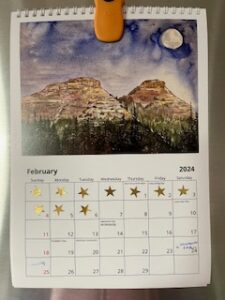
If only I was more motivated, I would start exercising.
I was planning on meal prepping on Sunday, but I couldn’t find the motivation.
I told myself I was going to walk each day this week, but I just don’t feel motivated.
Any of this sound familiar? Motivation gets a lot of credit and a lot of blame when it comes to making healthy changes. Rightfully so. Motivation is important and will 100% be the difference between you moving forward and you staying stuck.
But the thing that we get wrong is we think motivation inspires action, so we wait around until it shows up. In fact, it is the opposite. Once you understand the simple brain science of how motivation works, it is easy to create any time you want it. Today I’m going to show you how.
Brain science of motivation
The key to understanding motivation is found in dopamine. Most people think of dopamine as our pleasure neurotransmitter. In actuality, dopamine spikes when our brain anticipates that something important is about to happen. It inspires us to take action to receive something good or avoid something bad. This is why you can get super motivated right before a big event or the night before a deadline!
This is also why it is so hard to motivate after a workout where you pushed it too hard or a diet that was too painful and restrictive.
In order for dopamine to be able to anticipate that something good is going to happen, it needs to pull from experience. Meaning you need to take action, receive a reward and then dopamine will learn to spike to motivate you to do it again.
In other words, action inspires motivation, not the other way around.
So how do I motivate to motivate?
I know at first that can seem daunting, however, that is usually because we are under the impression that we need to take massive action to get massive results. I’m looking at you my all-or-nothing, type A, perfectionists!
Don’t worry, I’m on your team and want you to get massive results too! But when you are playing that mental “should I – shouldn’t I” ping pong match, your action needs to be small enough that you don’t need motivation to do it. Then you need a reward to train your dopamine.
This is why checking off a to-do list box, closing a ring on your watch, hitting 10,000 steps, finishing that water bottle, seeing that view from the hike, etc. can feel so rewarding. It doesn’t need to be huge but you do need to take a quick pause and acknowledge it, so your brain links it to the behavior.
What do I do with this information?
Create an environment of rewarding experiences by setting incremental behavior goals. I would recommend tracking these goals through the habit tracker found in this blog, or crossing it off on a white board, or having some electronic tracking system (i.e. steps, rings, etc.). This physical act of positive reinforcement will start a flood of dopamine…and thus motivation.
And if you think that I am somehow invincible to needing extra support, here is the calendar currently on my refrigerator.
Yes, those are gold stars and yes I put stars in the empty boxes for the end of January so I could see them. I also put things on my to-do list that I’ve already done just so I can feel the accomplishment of checking them off. What’s your point?
If your brain is immediately starting to tell you that you have so far to go, so much to lose, a silly small step wont do anything…don’t think of it as a small step, think of it as a match. A flame that is going to catch and spread quickly. Before you know it, your motivation is going to be on fire!


